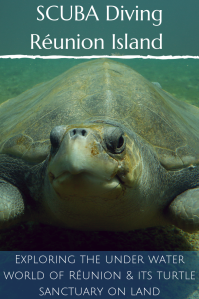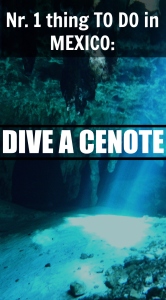After setting off in the pitch dark night, we are amazed by the beauty of the landscape surrounding us as we peep through the window of our cabin aboard the Mariner the next morning: dark grey granite boulders rise up from the turquoise Andaman Sea, palm trees are lined up on a white-sand beach, contrasting nicely with the deep blue sky, and a lush vegetation covers the North Surin island, 70 kilometres off the West coast of Southern Thailand and only a dozen kilometres away from the border with Myanmar. We are extracted from our contemplation by the bell, signalling our first dive briefing of our three-day-nine-dive live-aboard SCUBA diving expedition. If the island looks paradisiac, we are eager to explore the underwater world of the Surin and Similan Marine parks that contain some of the world’s best dive sites!
We get onto the deck of the boat that we share with another dozen of passionate divers. The six dive-masters staffing this trip have divided us into small groups according to everyone’s diving experience. The lead instructor, Nigel is passionately describing the Koh Stork dive site he drew on a white board while giving an entertaining but serious safety briefing. Slowly waking up while sipping my coffee and satisfying my stomach with our pre-breakfast of tropical fruits, I could not think of a better start of the day.
Soon after, all geared up in brand new and top of the line equipment, we are taking a giant leap into the turquoise water before descending. The underwater world of the Surin Islands exceeds our expectations as what lies beneath the surface is even more colourful! The palette of shades is endless: bright yellow funny-shaped juvenile boxfish, the whole hierarchy of angelfish from the queen to the emperor, black and yellow sweetlips, weirdly shaped and brightly coloured nudibranchs, rainbow parrotfish, grey with subtle blue shades trevallies predating the hundreds of blue and yellow fusiliers, green and brown camouflaged groupers…
Late afternoon, the boat sails southwards and we watch the sun set on one of the Surin Islands chilling out in a bean back on the upper deck of the Mariner. As night falls, we put on our wetsuits, gear up with our buoyancy compensators, weights, tanks, fins and masks as we are getting ready for a night dive. A bit cautious at first, I jump into the dark water and signal that I am ready to descend. Holding my flashlight firmly, I focus on controlling my breathing and staying close to my dive-buddy when I slowly sink into the dark below my fins. Equalising my ears regularly, I notice some glittering around my moving hand. Our dive master signals to switch off our flashlights. It is a surreal experience: floating in total darkness with all different fish around us that we cannot see. We start moving our fins and arms faster to observe the plankton lighting up. I wave my hand like a conductor on a staccato, and glitters appear around my imaginary baton, lighting up the total darkness. After a few wonderful surreal ten minutes, we switch on our flashlights again and start searching for some lion fish that hunt at night. It feels like we are floating through space, switching on and off the stars around us. The beam my light piercing through the pitch darkness focuses my attention along its path and life reveals itself: sleepy fish, translucent and tiny shrimps, lionfish. The three of my dive group stopped and keep shining their lights towards the sand. As I fail to notice the reason for the excitement of my buddies, I signal I want to keep exploring. The astonishment and shock I read in the eyes of my dive buddy push me to look harder. Incredible: an octopus! It is so difficult to spot! A master in camouflage, it changes colours and textures and I can only distinguish its tentacles when it swims between the sandy bottom and a rock. Into the spotlight, not knowing which colour to take to seem invisible, it goes through a wide range from white to blue, then contortions into the hollow of a rock!
Back on-board and after a warm shower, I rush to the deck to log my dive and listen to the stories of the other divers over a delicious Thai meal cooked by the crew. Observing the stars on the upper deck, I am already excited about the dives that are awaiting us after a good night sleep in our cabin, two of them being on one of world’s best dive site: Richelieu Rock.
After sailing south during the night, we wake up north of the Similan islands. We are moored at a buoy by a rock hardly sticking out of the sea. This is the tip of Richelieu Rock, made famous by Jacques Cousteau who broadcasted it to the world in the seventies. It is still early, and the hordes of boats are not even in sight as we jump into the water. The visibility is excellent and I am amazed by the beauty of the underwater landscape dotted by an abundant colourful wildlife. Several pinnacles form a horse shoe pattern, which internal edge shapes a narrow channel we carefully float through at a depth of 15 metres. Surrounded by the intense blue of the ocean, the dramatic pinnacles are covered with soft purple corals indeed reminding the deep colour of the long cape of Cardinal Richelieu on the paintings. All sorts of anemones house various species of clownfish, including the rare tomato clownfish. Yellow and orange sea fans, and to the top, light green sea grass resembling very fine and soft silk threads, slightly changing colours as they swing with the waves and play with the piercing sun rays complete the scene. In this breath-taking landscape, we observe air grasping dark moray eels lurking in the hollows of the rocks, extremely well camouflaged and toxic scorpionfish, and its more graceful cousin, the lionfish. In the narrow cracks of the boulders, funny Mantis shrimps box around, and massive lobsters accidentally reveal themselves with the white tips of their long antennas.
After taking in the underwater landscape of Richelieu Rock for a good 55 minutes, my dive master points towards my regulator. I signal that I only have some 60 bars left in my tank: it is already time to surface. I practice my buoyancy skills during the 5-minute safety stop until I notice a massive turtle appearing out of the blue. “Wow!” I scream enthusiastically through my regulator causing a cloud of bubbles shooting for the surface. All back on the boat with many different diving experiences from all over the world, we are all amazed by this admirable dive site, and we cannot wait until the nitrogen level in our blood has decreased enough for the second dive of the day on the same location.
As we sail south back to Khao Lak, we explore other dive sites. They are all very different: the 33-metre vertical wall of Koh Bon and its colourful fauna, the massive and dark boulders of Koh Tachai with its fascinating turtles and schools of barracudas, the scorpionfish-and-honeycomb-moray-eel infested Boonsung wreck…
Between dives, it is a real pleasure to exchange with the very knowledgeable staff, to learn about the underwater world, and the threats looming above species like sharks, to listen to stories and legends about the local sea nomadic Moken people, and to just take in this extraordinary experience.
As I am typing these words, I dive back into my memories. The bounty islands, the thousands of colourful tropical fish and coral species, the prehistoric turtles and sharks, the legends of the Mokens… On the migration path of the majestic whale sharks and manta rays, the Similan and Surin islands are a diver’s paradise and offer some of the world’s best dive sites: a truly fantastic remote region that is best explored on a multiday live-aboard SCUBA diving expedition.
Text: Marcella van Alphen
Photographs: Claire Lessiau (except if credited otherwise)
Travel tips:
- Various companies propose live-aboard SCUBA diving trips which is the only way to truly explore these beautiful and remote dive sites. Not too many of them pay as much attention to safety (gear, diving safety, comfort and health on board through hydration, seasickness pills…), environment (biodegradable shampoo and soap, reduced usage of plastics, raising the environmental awareness through ludic presentations), and giving back to the local communities (employing local people, giving part of the revenue back to the Mokens, raising the awareness about their situation), as Wicked Diving that we are very happy to recommend. Their extensive knowledge of the area and thousands of hours of diving the Andaman Sea is a guarantee of the best possible diving experience in the Surin and Similan Marine Parks.
- If some day trips are offered to some of these dive sites, we do not recommend them as they are synonyms with crowds.
- If you want to meet the Mokens, Wicked diving organises overnight snorkelling trips to one of the Moken villages in the Surin islands where you can learn more about this fascinating culture.
- Check out this interactive map for the specific details to help you plan your trip and more articles and photos (zoom out) about the area (tutorial)!
For more diving adventures, click on the images below:

























Ethereal!
Thank you very much four your compliment & your read, Cindy. Much appreciated 🙂
Great article – it’s gotten me inspired to plan another dive trip 😀
Happy to read this!! Writing it, we were back on the boat and in the water & really felt like going back! Thanks for your read & comment 🙂
Interesting post! I just can’t help but get jealous on your diving trip! It encourages me to do the same anytime soon. Thanks for sharing!
Thanks Kristina! It was such a wonderful experience: dive in, you won’t regret it 🙂